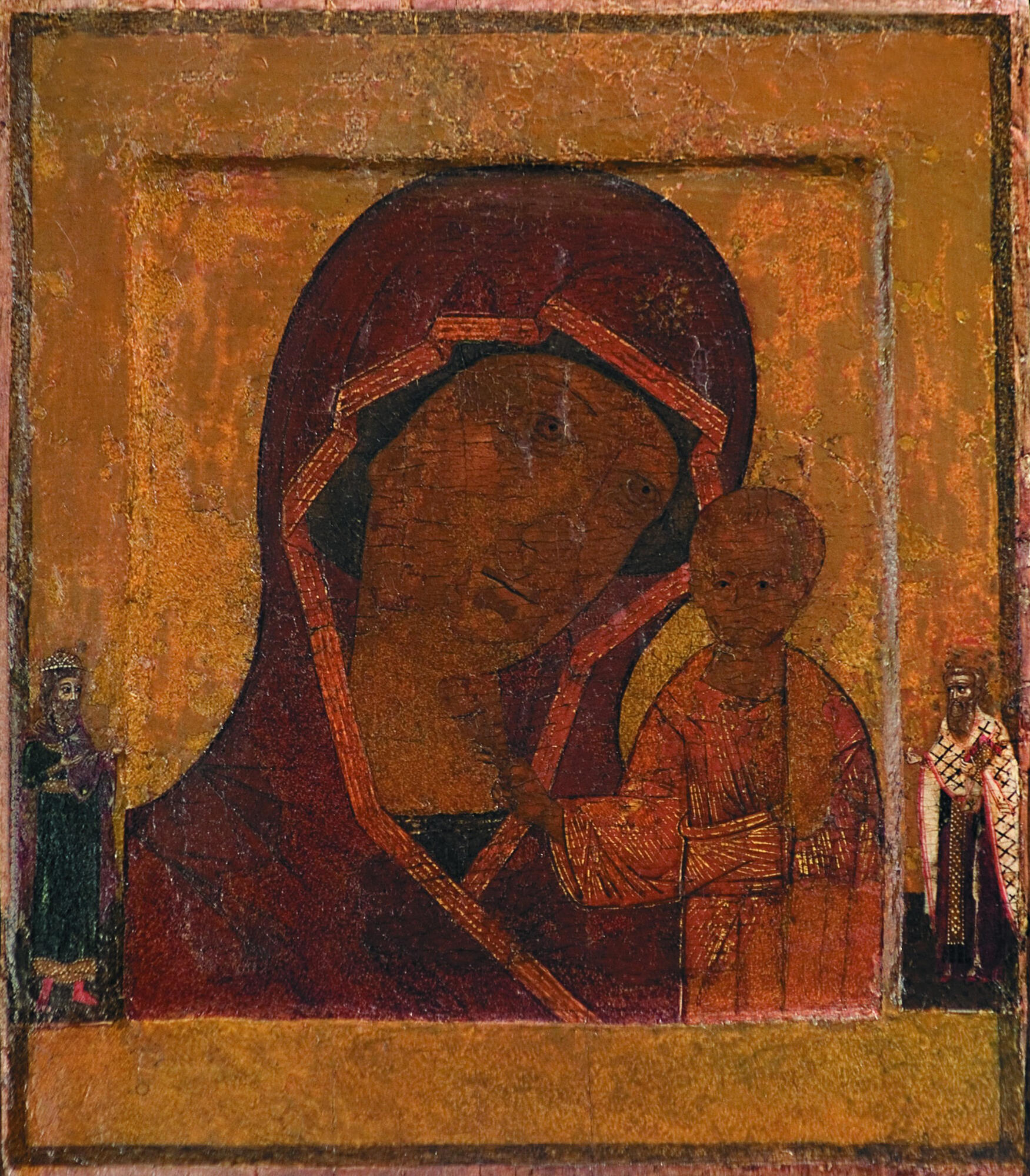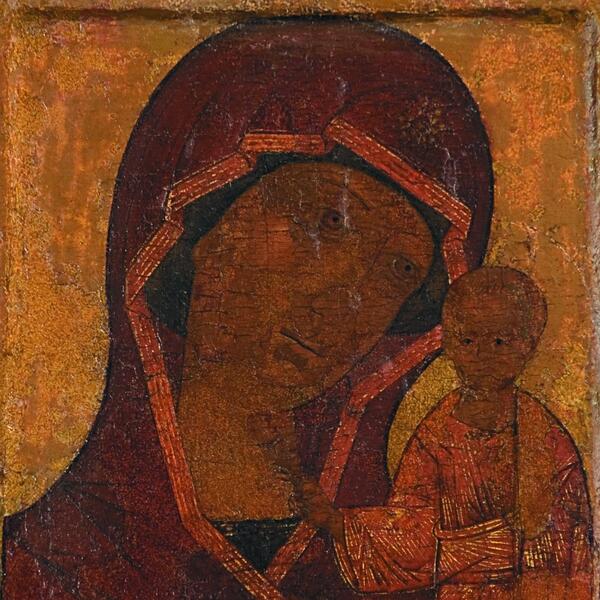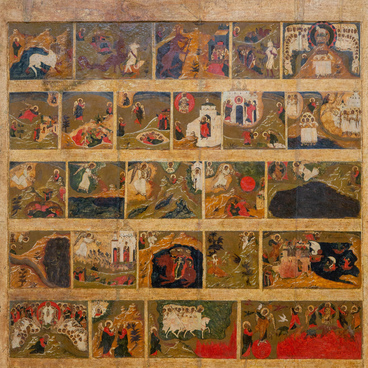This icon is a copy of the wonderworking Yaroslavl icon of Our Lady of Kazan. That one, in its turn, was also a copy based on the icon which appeared in Kazan in 1579. In 1588, a man called Gerasim, who lived in Romanov (nowadays — the town of Tutayev, Yaroslavl Region), came to the Kazan lands for business. He was so captivated with the idea of having an icon of the Mother of God that she replied to his prayers. She came to Gerasim in a dream and showed him the place at the market where he could find a young man with a wonderworking icon. She ordered Gerasim to take the icon and return to Romanov. Having touched the icon, Gerasim immediately got rid of the pain in his hand which he had had for a long time. Following the instructions of the Mother of God, he informed the people of Romanov of her will. They had to return the Church of the Nativity of Mary from the hill to its previous location and consecrate it in the name of the newly received icon. All the instructions were fulfilled.
In 1609, Romanov was invaded by Lithuanian forces. One of the officers brought the icon to Yaroslavl. For a long time, he refused to part with it even for money but eventually gave it to one of the oldest citizens Vasily Lytkin. It was placed in the Church of the Laudation of the Mother of God outside the city. When the Poles besieged Yaroslavl, the icon was transferred to the Church of the Nativity within the city. Soon, a new temple was built for the wonderworking icon closer to the area of the attack, and the city was saved. The new church soon developed into a convent and received nuns from another nunnery that had been destroyed by the enemy. A year later, Vasili Shuisky considered the request of Romanov citizens who asked for the icon to be returned to them. In the end, the wonderworking icon remained in Yaroslavl where it became famous. However, an exact copy with the same setting was created for Romanov, and the original icon was brought there annually for the congregation to worship it.
The wonderworking icon was lost in 1931. The icon presented in the exhibition is one of its first copies. The figures of saints in the borders were added later, in the 17th century, most likely upon a private commission.
On the left is the image of Righteous Job. He lived sometime in the period between 2000 and 1500 BC in Northern Arabia. He was a devout and god-fearing person. Job never lost his faith in God even after suffering for a long time, losing his money, children, health, and friends. As a reward for his faith, God gave him twice as much as he had before. The story of Job is considered to be the foretype of the passions and resurrection of Christ.
The figure in the right border is the martyr Antipas. He was the bishop of Pergamon during the reign of emperor Domitian, a persecutor of Christians. For refusing to worship idols, Antipas was sacrificed at the Temple of Artemis. However, he remained incorruptible, and his martyr’s death encouraged many heathens to adopt Christianity. His tomb in Pergamon is believed to possess miraculous powers of curing diseases.
In 1609, Romanov was invaded by Lithuanian forces. One of the officers brought the icon to Yaroslavl. For a long time, he refused to part with it even for money but eventually gave it to one of the oldest citizens Vasily Lytkin. It was placed in the Church of the Laudation of the Mother of God outside the city. When the Poles besieged Yaroslavl, the icon was transferred to the Church of the Nativity within the city. Soon, a new temple was built for the wonderworking icon closer to the area of the attack, and the city was saved. The new church soon developed into a convent and received nuns from another nunnery that had been destroyed by the enemy. A year later, Vasili Shuisky considered the request of Romanov citizens who asked for the icon to be returned to them. In the end, the wonderworking icon remained in Yaroslavl where it became famous. However, an exact copy with the same setting was created for Romanov, and the original icon was brought there annually for the congregation to worship it.
The wonderworking icon was lost in 1931. The icon presented in the exhibition is one of its first copies. The figures of saints in the borders were added later, in the 17th century, most likely upon a private commission.
On the left is the image of Righteous Job. He lived sometime in the period between 2000 and 1500 BC in Northern Arabia. He was a devout and god-fearing person. Job never lost his faith in God even after suffering for a long time, losing his money, children, health, and friends. As a reward for his faith, God gave him twice as much as he had before. The story of Job is considered to be the foretype of the passions and resurrection of Christ.
The figure in the right border is the martyr Antipas. He was the bishop of Pergamon during the reign of emperor Domitian, a persecutor of Christians. For refusing to worship idols, Antipas was sacrificed at the Temple of Artemis. However, he remained incorruptible, and his martyr’s death encouraged many heathens to adopt Christianity. His tomb in Pergamon is believed to possess miraculous powers of curing diseases.



